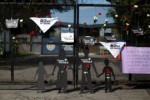Lebanon 50 years after civil war struggling with identity and sovereignty
On April 13, Lebanon marked a solemn milestone – the 50th anniversary of the outbreak of its civil war, a devastating conflict that reshaped the country’s identity and laid bare the fragility of its statehood. Half a century on, Lebanon remains caught in a tragic cycle of violence, political paralysis, and economic devastation. The bus ambush in Ain El-Remmaneh in 1975, which killed a dozen people, is widely recognized as the event that triggered the 15-year civil war. But as with most civil wars, the roots of Lebanon’s unraveling were planted long before the first shot was fired.
Deep-seated sectarian divisions, economic inequality, a fragmented social fabric, and external interference converged to make Lebanon ripe for conflict. In 1975, the country was already reeling from tensions between Christian factions and Palestinian armed groups, as well as competing visions of Lebanon’s identity: Arab versus Western, Muslim versus Christian, nationalist versus pan-Arabist. The Lebanese state, unable or unwilling to assert sovereignty or address grievances, simply buckled under pressure. What followed was 15 years of war that shattered the country’s infrastructure, institutions, and spirit.
The civil war’s toll was staggering. More than 120,000 people were killed, 300,000 were wounded, and around 18,000 disappeared. Approximately one million Lebanese – a quarter of the population at the time – fled the country. The war’s economic consequences were equally severe. According to the International Monetary Fund, the cumulative economic loss between 1975 and 1993 amounted to at least 24 times Lebanon’s real GDP in 1993. Beirut, once dubbed the “Paris of the Middle East,” was reduced to a battlefield. Entire neighborhoods were flattened, and Lebanon’s once-thriving financial and tourism sectors collapsed.
Lebanon also became the stage for regional and international rivalries. Palestinian factions, especially the Palestine Liberation........






















 Toi Staff
Toi Staff Tarik Cyril Amar
Tarik Cyril Amar Gideon Levy
Gideon Levy Belen Fernandez
Belen Fernandez Penny S. Tee
Penny S. Tee Jeffrey Bernstein Ph.d
Jeffrey Bernstein Ph.d Muhannad Ayyash
Muhannad Ayyash John Nosta
John Nosta Andrew Mitrovica
Andrew Mitrovica Andrew Silow-Carroll
Andrew Silow-Carroll Sharona Margolin Halickman
Sharona Margolin Halickman
